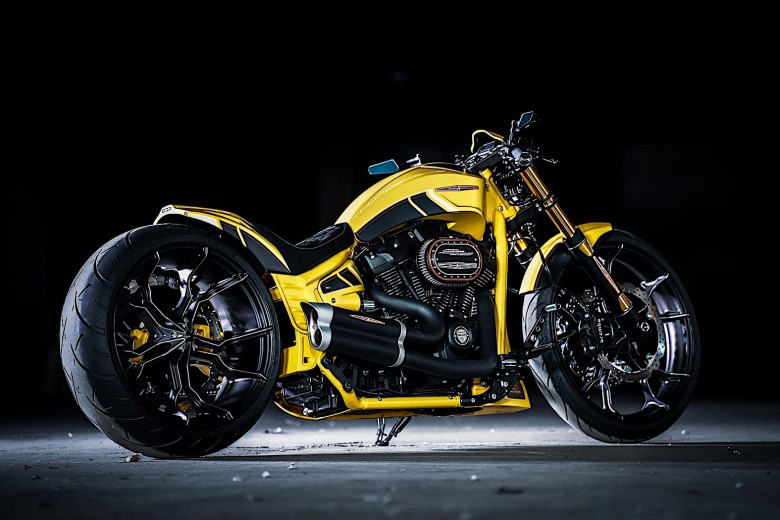views

Motorcycles have long represented freedom, speed, and the thrill of the open road. But have you ever wondered, when were motorcycles invented? The answer might surprise you. The history of the motorcycle is a remarkable journey filled with innovation, evolution, and cultural transformation. Let’s take a closer look at how these iconic machines came to be.
When Were Motorcycles First Invented?
To understand the history of the motorcycle, we have to go back to the early 1800s. In 1817, German inventor Karl von Drais introduced a two-wheeled, foot-powered wooden vehicle known as the Laufmaschine or “running machine.” It didn’t have pedals or a motor, but it laid the groundwork for what would eventually become the modern motorcycle.
The first powered two-wheeler appeared in 1867. French inventor Ernest Michaux fitted a small steam engine to a bicycle frame. While slow and difficult to operate, this invention is widely regarded as the first prototype of the motorcycle.
So, to answer the question directly: motorcycles were invented in the late 1860s, evolving from early experiments in personal transport.
The Birth of Modern Motorcycles: Early 20th Century
As the 1900s began, motorcycles started to resemble the machines we recognize today. Indian Motorcycle released its first model in 1901, followed by Harley-Davidson in 1903. These bikes were equipped with gasoline-powered engines and quickly gained popularity for being fast, efficient, and exciting to ride.
This period marks a major turning point in the history of the motorcycle, as the industry began to develop rapidly, and motorcycles were no longer just experimental vehicles—they were becoming a part of everyday life.
Motorcycles in Wartime: 1910s–1940s
During World War I and II, motorcycles became essential tools for military operations. Their agility and speed made them ideal for relaying messages, transporting light equipment, and navigating tough terrain.
By the end of WWI, companies like Harley-Davidson had devoted a large portion of their production to military models. British brand Triumph also played a key role, supplying thousands of motorcycles to Allied forces during WWII.
The Rise of Motorcycle Culture: 1950s–1960s
After the wars, returning soldiers found new purpose and identity through motorcycles. Biker clubs formed, and a new subculture emerged—one that valued freedom, nonconformity, and the brotherhood of the open road.
Motorcycles became symbols of youth and rebellion, especially after Hollywood films like The Wild One romanticized the lifestyle. Brands like Triumph, Honda, and Yamaha gained global recognition during this time, helping to reshape the market.
High-Tech Advances: 1980s–1990s
In the final decades of the 20th century, motorcycles experienced major technological advancements. Features such as fuel injection, disc brakes, and electronic ignition became standard.
Japanese manufacturers like Honda, Kawasaki, Yamaha, and Suzuki led the way in innovation, especially in the sportbike segment. While Harley-Davidson remained popular in the cruiser category, global competition brought better performance and new designs to the industry.
Into the Future: 2000s to Present Day
The modern era has seen a new chapter in the history of the motorcycle. Today’s bikes combine retro aesthetics with futuristic tech. Classic brands like Royal Enfield have revived vintage styling, while BMW and Ducati continue to push performance boundaries.
Most notably, electric motorcycles are gaining traction. Brands like Zero Motorcycles and Harley-Davidson’s LiveWire are reshaping the future of riding with clean energy and smart features.
What’s Next for Motorcycles?
Looking ahead, we can expect even more innovation in motorcycle design. From AI-assisted systems to augmented reality helmets, and even the early concepts of flying motorcycles, the future is bright—and fast.
The rider community is also evolving, with more women motorcyclists joining the road and a growing emphasis on sustainability, safety, and smart technology.
Final Thoughts
The history of the motorcycle spans over two centuries, beginning with steam-powered experiments and evolving into today’s electric and high-performance marvels.
So, when were motorcycles invented? While their roots date back to the early 1800s, the first true motorcycle emerged in the 1860s—and they’ve been accelerating into the future ever since.
Ready to start your own ride through motorcycle history? Visit BidMoto today and find the perfect bike to begin your journey.
Disclaimer: This article is for informational purposes only and does not serve as professional advice. Please consult a certified expert before making decisions regarding motorcycle use, maintenance, or purchases.






















Comments
0 comment